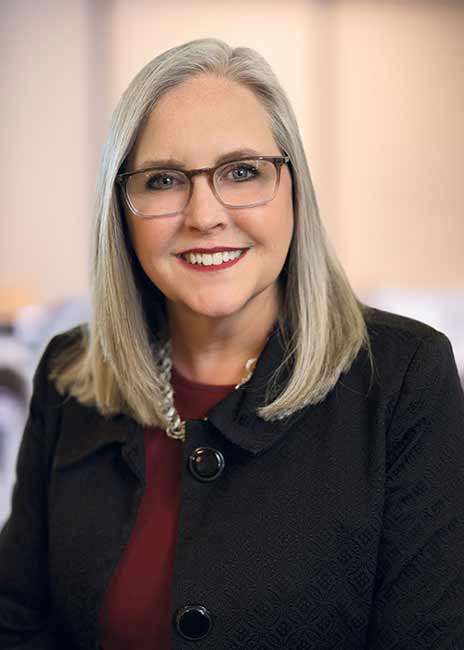A quartet of foodservice consultants share how they see foodservice design and equipment solutions evolving to meet the challenges of the day.
Over the past few years, the foodservice industry has faced its fair share of struggles in the form of shifting economic headwinds, changing consumer work habits and preferences, and supply chain challenges, to name but a few. As a result, the industry has also seen pockets of progress among so many challenges. Foodservice consultants have been on the forefront of these changes, helping operators make sense of it all by adjusting the size of restaurants, developing innovative solutions to tackle labor issues, managing food costs and more.
 Robert Doland, FCSI
Robert Doland, FCSIDuring the past 25 years, Robert Doland has worked on design projects both in the U.S. and overseas. He has worked extensively in the corporate feeding segment with clients in the financial, manufacturing, law and pharmaceutical business segments. In addition, Doland has experience in the healthcare and colleges and universities segments. His responsibility is to oversee all aspects of the services the firm provides to their clients. He is directly responsible for the initial programming and schematic design of the project and stays involved with review and oversight of the project during document and construction phases. He has been a professional member of the Foodservice Consultants Society International since 2002.
 Christine Guyott, FCSI, RDN
Christine Guyott, FCSI, RDNWith more than 30 years of experience, Christine Guyott guides her clients through the design process, offering solutions to address their goals and challenges. Guyott leads projects across a variety of market segments. As a registered dietitian, though, her true niche is healthcare, where she works with everything from small healthcare facilities to large academic medical centers. She works with foodservice directors, administrators, and architects in planning and implementing foodservice spaces. She is an active member of the Foodservice Consultants Society International, presently serving as chair of its board of trustees.
 Juan Martinez, PhD, PE, FCSI
Juan Martinez, PhD, PE, FCSIJuan Martinez is a 39-year veteran of the restaurant industry. His company specializes in using industrial engineering to help restaurants optimize their investment to drive better unit economics. Prior to becoming a consultant, Martinez led the research and development team at Burger King, where he was responsible for innovation in the areas of menu, operations and equipment. He is a member of several professional organizations, including Foodservice Consultants Society International, where Martinez serves on the board of trustees for its Americas division. He is also a fellow of the Culinary Institute of America.
 Eric Norman, FCSI
Eric Norman, FCSIEric Norman began his career in foodservice at 14 years old, working at a local Dairy Queen. At 19, he became a bartender, and subsequently worked his way through college. Upon graduation, Norman went to work at MVP Services Group, where he had worked as an intern since the age of 18. He stayed there until MVP merged with Clevenger Associates in early 2017. Over the course of a career that spans more than 20 years, Norman has designed projects for a variety of foodservice operator segments, notably education. He has been heavily involved with the Foodservice Consultants Society International for more than 15 years, serving in various capacities, including as president of its Americas division.
What are some design changes you are noticing among restaurant chains?
JM: Concepts are getting smaller and more compact, no doubt. Operators have accepted that off-premises consumption is going to be a big part of their equation moving forward. Even if you are a full-service restaurant, operators want to learn how to manage off-premises better from the same space. You want to be more compact because everything is expensive. Real estate is expensive. Construction is expensive. The bigger the concept is, the more labor is needed. All of this makes it challenging to drive the right level of unit economics. One way to manage this issue that many concepts have been opting to do is to offer a drive-thru-only concept. That’s why we see so many chains going in that direction. An off-premises-only location that does $1 million in revenue in some instances will be more profitable than one that offers both on- and off-premises service, even at much higher sales. I realize that sales are important and often used for a barometer of health for a brand, but the reality is that profitability and the return on the investment is more critical.
In many major business centers employees are only back to the office 50% to 60% of the time compared with pre-pandemic levels, per various studies. How are B&I operators responding to this significant change?
RD: Many of our clients are leveraging food as a magnet to pull people back to the office. For example, a lot of clients that were not offering free food or subsidizing food are now considering it.
From a design perspective, seating is becoming more decentralized for a variety of reasons. First, large, open spaces can be less comfortable. Also, some people use dining spaces to work and they see the food as more of a convenience, so the spaces are better decentralized and more comfortable to serve as a third work space.
In other instances, clients use food to bring their employees back together. Dining spaces can serve as environments where people come to generate ideas, and offering food is an important part of that experience. The tech industry is a good example of that.
Also, right now there are a lot of real estate deals out there, so a lot of companies are moving buildings. When they do so, they are trying to right-size their operations. In the past, if a business had 3,000 employees, they would build a foodservice operation to accommodate 1,000. Now, that same 3,000-employee business might have to feed 500 people on Wednesday and 100 on Friday. From a design perspective, we have to design a facility that will have 25 culinary employees on Wednesday and can drop down to 15 or 10 employees on a Friday while still offering a great experience on both days. It’s a challenge to provide a positive guest experience throughout the week while balancing labor, food costs and the design.
Because of this, it can be easier to design for a decentralized operation than trying to right-size a single space. Decentralized facilities might include a micromarket, a coffee kiosk that offer salads and sandwiches, or pop-up restaurants. These options can generate interest and prevent menu fatigue. The bottom line is flexible facility design is key now as many clients are not sure what their daily population will be. Just “turning off” stations is not a good solution.
What are some innovative ways to address labor challenges through design and equipment selections?
CG: Equipment with easy-to-use controls can help make labor more efficient. Also, equipment that offers the ability to roll out menus to a number of pieces of equipment at one time helps with efficiency. From a design perspective, we continue to design lean kitchens, watching adjacencies and the number of steps staff have to take as they move from one station to another. We also design open spaces so that staff and management can see each other and easily move from one station to the next in order to assist as needed. In a design sense, that means we have to keep those vision lines as clean as possible.
Some of our operator customers are going back to self-serve stations. We are going more toward flexible stations, where either the staff can serve guests or it can be self-serve. We’re doing this because we never know when we might have to go back to a scenario where staff service is the only option. You have to have that flexibility so you can flex up and down, depending on the day and the daypart or what staff are available.
In a general business sense, artificial intelligence remains a really hot topic these days. Any thoughts on how it might relate to foodservice or foodservice design?
EN: Artificial intelligence has taken a few forms in the marketplace, including OpenAI’s ChatGPT and Google’s Bard. I also recently learned about a foodservice-specific AI called Taste GPT. This kind of technology gathers information about foodservice trends and keeps an eye on data points, which they call “consumption moments.” This would include what people are searching for, what recipes are being viewed, online grocery orders and so on. It combines all of this data and can predict trends about what people will want at specific times. It will give you answers using real-time data from across the world. Companies used to take a year to predict food trends and would already be behind when they went to market. Now it’s done in real time. In terms of foodservice, what if you had AI monitoring your equipment? Could it predict problems before someone knew about it? This technology is very exciting, and the impact for the industry is really unknown.
Flexible design is a term tossed about plenty these days. Can you offer an example of a flexible design?
RD: One of the new concepts that we’ve been trying with several clients is the pickup window. It can be in a cafe or set off by itself. It’s like a ghost kitchen in that it has a broad menu, and customers can order off their phones or from their desks. The customers then pick up their meals at a fulfillment window. There’s still human contact, and that window can work when the population is at 80% or 20%. We’ve had a lot of fun with that. This solution does not work as an option that allows customers to belly up to the window to place their orders, though. The ordering has to be kiosk or remote. We’ve been able to start offering solutions like this because of the progress [that] restaurant-related technology has made in recent years.
Is there any one factor that’s influencing your designs these days?
EN: Efficiency is the main driver in our designs. Labor markets are soft, and people are having trouble finding and keeping employees. We need to help them make high-quality, fresh products with less staff. This won’t change anytime soon. That means we are looking at any solutions that can increase speed and efficiency. Speed ovens represent one example of this. Also, any equipment that’s easy to use and has better controls is an important part of our designs. That includes foodservice equipment that can do two or three different tasks. In other words, we are specifying multifunctional equipment. Anything that can drive efficiency is at the forefront of our designs.
Efficiency translates differently by segment, too. In B&I designs, pickup cubbies — heated, cool or ambient — are something we would have never used previously. These are now part of our designs because they help provide frictionless service when it is most convenient for the employees. With restaurants, we are including spaces to fulfill those takeout and to-go orders. This trend may drive entirely separate workspaces, including cooklines and prep areas just to service drive-thru, takeout and to-go. So, we have to think of those workspaces differently.
How do smaller footprints impact the back of the house?
JM: The back of the house is not shrinking as much as the front of the house. This is driven by the off-premises boom that has transpired in the last few years. You still need a kitchen engine to drive the sales, but a bigger portion of these sales are not consumed at the store, driving a smaller front of house. Right sizing the back of house to drive the intended sales is still important. The smaller the back of the house, the lower the operating costs, especially labor and utilities. That said, you do want to have a smaller back of the house because it costs less, and you can do more with less labor. The operators still want to generate less sales even though the space is smaller. You want to look at your capacity for sales and look at how design, technology, equipment and labor help you get your revenue goals. One key design point I am making a lot these days is, any time you walk down an aisle, there better be something happening on both sides. If not, you are wasting space.
There are tons of great solutions out there, how do you know when you have the right one?
CG: Start by knowing what the operation’s goals are, what their menu is and what they are going to do with their spaces. Take a fryer as an example (if we can still use them!). Healthcare foodservice operators don’t just cook fried chicken in that equipment. They cook a lot of things in there, so the unit has to be versatile. And it’s important to know how the factory will stand behind that piece of equipment. What’s the local service network like? We automatically add the labor-assisting features like auto lifters, filters, etc.
Plus, not everyone wants to be on the leading edge of innovation. Many customers don’t have a lot of additional capital to replace an item if something goes wrong or they don’t have staff that understand complicated instructions. For those reasons, some don’t have a great appetite for risk and may opt for something more tried-and-true instead of a newer, more untested solution.
Our customers change within healthcare. We could be working with one person or company when designing the facility, and it could be a different person or company when it opens. So, we have to do what’s right for that facility and not necessarily that chef — because what’s innovative to one person may be overcomplicated to another. If they won’t use the equipment, it is a waste of resources and space.
Hungry for More?
Want to ask these consultants a few questions of your own?
Be sure to register for the companion webcast that will take place live at 1 p.m. CST on June 20. During this hour-long presentation, the panel will delve deeper into such topics as automation and robotics, the electrification of commercial kitchens, the state of the supply chain, and much more.




